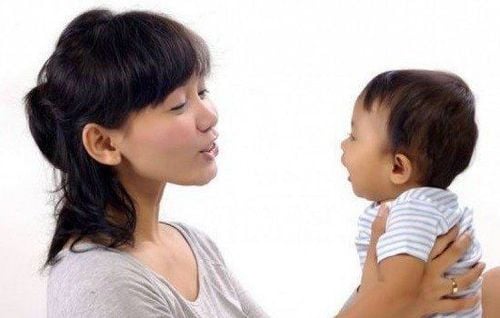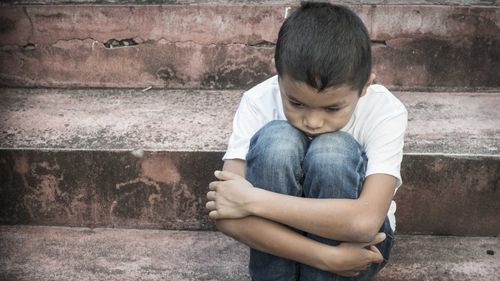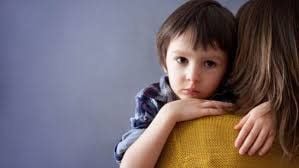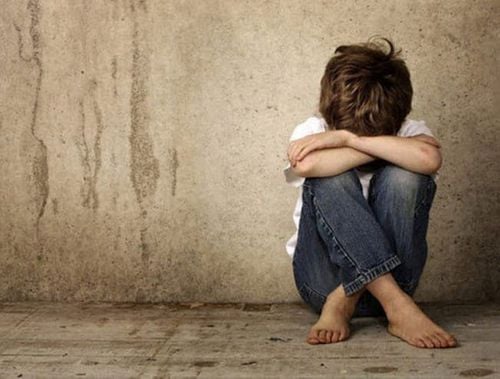This is an automatically translated article.
Posted by Master Music Therapist - Unit of Regenerative Medicine Clinic and Educational Psychology - Vinmec Times City International General Hospital.
Studies around the world show that music is attractive because it transcends language, is a way to the world of emotions and feelings, breaks down the wall separating children with Autism Spectrum Disorder (RLPTK). with the outside world.
1. The effect of music therapy on language development for children with autism spectrum disorder
The emotional, emotional world is said to be strange for children with autism spectrum disorder, but music can penetrate. Music can penetrate into the subconscious, the unconscious without the child knowing it, and has an attraction and penetration that children cannot resist.
Unlike using words to communicate, music is a special language that can convey messages and emotions through nuances, rhythms and melodies. Through music, children can dance, clap, and yawn to express their feelings.
Author Neha Khetrapal of Bielefeld University, Germany has conducted research and confirmed: "Music is an effective choice to improve communication ability in people with ASD". Research by Lim HA shows that music helps children with ASD's ability to acquire vocabulary and express language.
>>> Music education and music therapy for children with autism
The process of children exposed to and active in music such as learning to sing, listening to songs, moving to music, playing music games... through that , introducing the world around children with simple words, the content revolves around the following topics: Nature, animals, trees, parents, friends... so that children can understand and immerse themselves in the world. that. Depending on the level and ability of the child to gradually teach children to sing in combination with body movement to develop language according to each developmental stage.
2. Using music therapy to develop nonverbal communication
At a young age, children with ASD often express their needs through crying. Growing up, children express their will by pulling an adult's hand to the desired object. Often times, children do not express through facial expressions. However, children do not know how to point, nod, shake their head. Children also do not participate in imitation games, do not have the ability to imitate what their parents do like normal children do.
In particular, the baby does not understand the meaning of the gestures and gestures of adults. As children get older, they can sometimes use and sometimes understand adult gestures. Some children develop the ability to imitate play, but play is often stereotyped and repetitive.
Research published in the journal Music Therapy confirms the role of music therapy with children with ASD is to improve social behavior; increased concentration of attention; strengthen communication efforts (speech, gestures, posture); reduce stress; increase body awareness and motor coordination... Here are some specific guidelines to help children develop nonverbal communication:
If the child is small (can be held) have them sit on your lap and swing together, moving to the sides (left-right) rhythmically to the music. Choose soft instrumental music or sing to your child in a moderate sound, tempo 60-80 beats/minute (closer to heart beat). If the child is older, let the child sit on a foam mat with an area of about 50-60cm, instruct the child to hold hands on the carpet and gently and steadily move to the music. With this activity, adults should choose a sitting position opposite, swaying and moving in the same direction as the child. Keeping the rhythmic movement of the body, gradually release the hands from the mat and move both hands at the same time very slowly in different directions (forward, sideways, up...), try maintaining eye-eye contact) Singing with accompanying movements: Teach children how to understand, how to express facial emotions, how to imitate, how to play imaginary... from the actions in the song. For example: When children listen to the song "Wash your face like a cat", teach them to act like the cat in the song, changing the movements according to each sentence of the song.
Question 1: Meow meow wash your face like a cat: Use both hands to pretend to rub your face like washing your face.
Verse 2: Ugly, ugly, not loved by your mother: Raise your right hand to wave, shake your head to show displeasure.
Question 3: Where is the towel to sit and lick the lips: Imitate the cat, put the tongue to lick around the edge.
Question 4: Eye pain and then cry again: Raise your hand to rub your eyes pretending to cry because of eye pain, cry.
Instruct children to make facial expressions according to the nuances of the song. You can choose music that is clear (happy/sad, fast/slow, strong/soft) or songs that describe activities and feelings. (insert illustration) For example: The song “The ringed bird” can teach children to show different greetings to the saloon uncle, the nightingale, the squirrel, the brown starling...
Instruct the children sing along with hand signs: With this method, teachers must give sign principles and instructions so that children understand when they see signs, children will sing the melody of the piece according to the shape of the guided hand. .

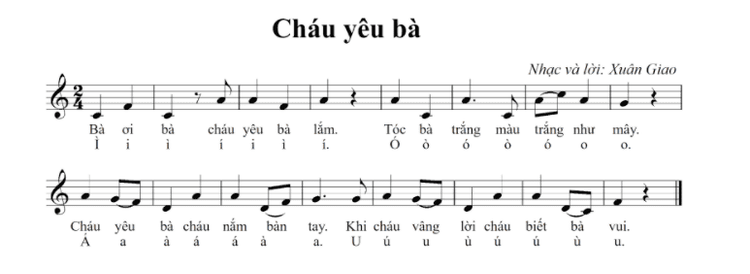
Unit of Educational Psychology - Autism, Vinmec Times City International General Hospital is a pioneer in applying scientific and artistic methods to assess and treat children with autism, with high efficiency.
Areas of intervention to educate children with autism at Vinmec:
Pediatric psychiatry Clinical psychology - educational psychology Special education Speech therapy Meditation - yoga therapy Music therapy Fine art therapy Doctors Doctors, therapists and teachers at the Center are trained at prestigious schools: University of Education, University of Social Sciences & Humanities – Hanoi National University, Academy of Educational Management ... and regularly learn to improve skills through short-term and long-term training courses at home and abroad with leading experts from the US, Australia, India, Italy.
Please dial HOTLINE for more information or register for an appointment HERE. Download MyVinmec app to make appointments faster and to manage your bookings easily.
Articles refer to the source:
Nguyen Thi Hoang Yen (2013), Autism - theoretical and practical issues, Pedagogical University Publishing House. Lim HA (2010), Effect of "developmental speech and language training through music" on speech production in children with autism spectrum disorders, J Music Ther, 2010 Spring; 47(1):2-26 Tran Thi Thuy (2014), Music education for children with autism spectrum disorders 4-6 years old, Master thesis, Central University of Music and Pedagogy. Phung Ngoc Ha (2018), Using music therapy to develop language for children with autism spectrum disorder




